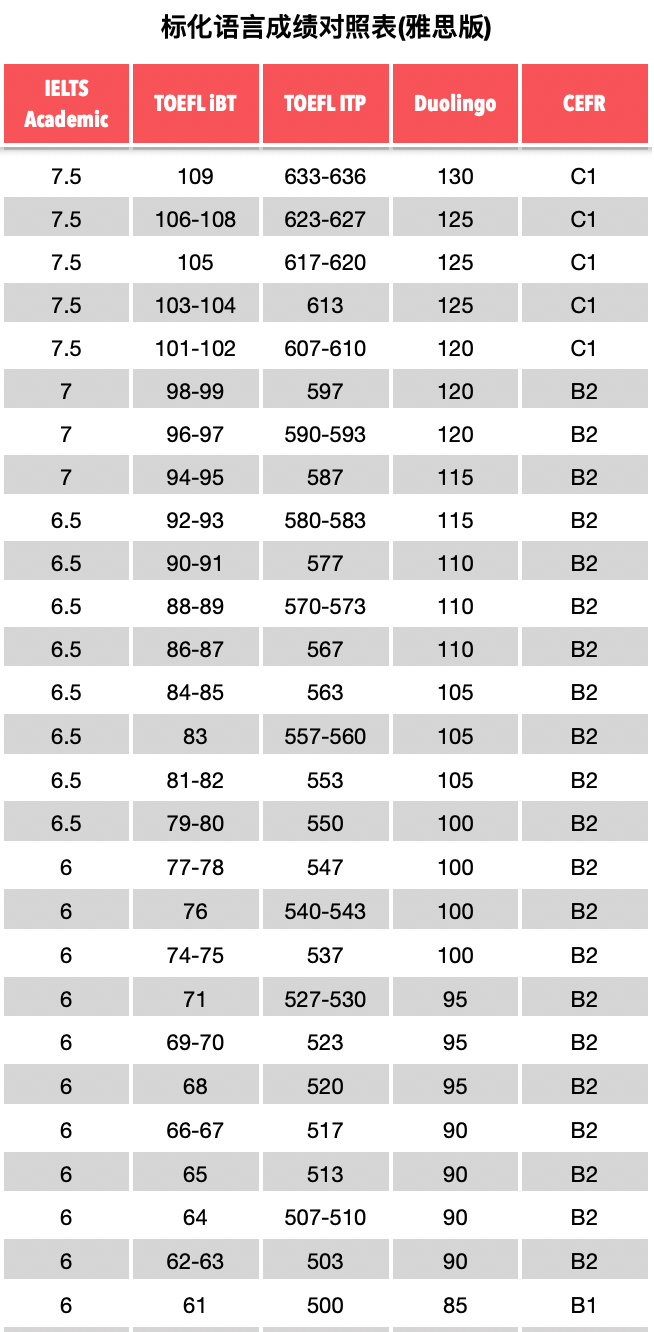今天小编给大家带来托福听力常见题型解题思路讲解:推理题和预测题,希望能够帮助到大家,下面小编就和大家分享,来欣赏一下吧。
托福听力常见题型解题思路讲解:推理题和预测题
推理题
托福听力推理题是让考生根据所听内容进行推理从而选出答案的题型。常见的提问方式包括:
What does the woman imply about the new medical research?
What can we infer from the professor’s comment on the New England system?
在做题时,考生首先需要仔细读清楚选项。因为推理题的答案一般不会在录音材料中给出,而是需要考生对材料内容进行进一步引申,得出更深层次的内容。所以,考生往往只有在读完选项之后才能知道答案对应的内容。同时,推理题虽然考查的是录音材料的细节之处,但是其考查内容还是围绕着全文主题展开的。因此在做题时,考生如果实在不知道选哪一个,那么就可以去选和全文主题最接近的选项,这样的选项大多数都是正确的。
预测题
预测题是对长对话或讲座结束后将会发生何种事情的猜测的考查。这种目有一个鲜明特征,就是在题干中经常会出现will这个表示将来时态的助动词。预测题常见的提问方式有以下几种:
What will the man do after the conversation?
What will the student include in his assignment?
What kind of assignment will the professor give?
考生在解答预测题时首先要注意,预测题有一个十分常见的情况,就是它的答案一般都出现在一篇录音材料的结尾。同时,预测题的答案在出现时一般都是由讲话人使用一个提出建议的句子来给出。因此,考生只要在文章结尾听到提出建议的句子,一定要将其中所提出的建议记下来,这往往就是预测题的答案。表示建议的常见句型:How about…/What about…/Why not…/Why don’t you…/Would you mind…/Would you please…/I have a suggestion for you./You need to…/You should…/You’d better…
2020托福听力练习:膝关节响声或为患者康复提供帮助
The sound of a cracking knee isn't particularly pleasant.
But it gets worse when you listen up close.
"It does for most people. But for me, it just makes me excited."
Omer Inan, an electrical engineer at Georgia Tech.
"I actually feel like there's some real information in them that can be exploited for the purposes of helping people with rehab."
Inan's experience with cracking knees goes back to his days as an undergrad at Stanford, where he threw discus.
"If I had a really hard workout, then the next day of course I'd be sore, but I'd also sometimes feel this catching or popping or creaking every now and then in my knee."
A few years later, he found himself building tiny microphones at a high-end audio company.
So when he got to Georgia Tech and heard the Defense Advanced Research Projects Agency, DARPA, wanted better tech for knee injuries, he thought:
Why not strap tiny microphones to people's knees, to eavesdrop as their legs bend? "
What we think it is, is the cartilage and bone rubbing against each other, the surfaces inside the knee rubbing against each other, during the movements."
He and a team of physiologists and engineers built a prototype with stretchy athletic tape and a few tiny Mics and skin sensors.
And preliminary tests on athletes suggest the squishy sounds the device picks up are more erratic, and more irregular, in an injured knee than in a healthy one.
Which Inan says might allow patients and doctors to track healing after surgery.
Details appear in the IEEE Transactions on Biomedical Engineering.
"The primary application we're targeting at first is to give people a decision aid during rehabilitation, following an acute knee injury, to help them understand when they can perform particular activities, and when they can move to different intensities of particular activities."
A useful thing to take a crack at.
膝盖裂开的声音肯定不是令人特别愉悦。
但是你靠近听时,声音就会更刺耳。
“很多人都是这样的感觉,但对我而言,这种声音只会让我更为兴奋。”
佐治亚州理工学院的一名电气工程师奥默尔•伊恩楠说道。
“实际上我认为这些声音中包含的一些的信息可以为患者所用并且有助于他们康复。”
伊恩楠的膝盖创伤经历要追溯到他在斯坦福大学的学生时代,他就是在那里开始讨论这项实验。
“我要是刻苦进行训练,第二天膝盖就会非常痛,但有时我也会感觉膝盖发出咯吱咯吱的声响。
而几年后他在一家高端音频公司制造了微型麦克风。
因此当伊恩楠来到佐治亚州理工学院并听说到DARPA,即美国国防部高级研究计划局的这项工程后,他希望能研发更先进的技术来治疗膝伤,于是他想:
“为什么不把微型麦克风植入人体膝盖记录下膝盖弯曲发出的声音呢?”
我们认为发出声音是因为软骨和骨头相互摩擦所致,而运动的过程中,膝盖内部这两者的表面会相互摩擦。
他和他的生物学家及工程师小组用弹性透气胶带、一些微型麦克风及皮肤传感器建立了一个原型。
而对运动员的初步测试表明,同健康膝盖相比,受伤膝盖中所侦测到的声音更加不稳定,也更无规律可循。
伊恩楠表示这项技术可能会让病人及医生手在术后进行追踪治疗。
这项研究已在《IEEE生物医学工程》杂志上发表。
“我们进行这个项目的主要目标人群是患者的膝盖受到严重创伤后,首先要让他们知道,在康复期间何时可以进行特殊活动及何时可以增加强度。
这种追踪会非常有用。
1.listen up 听好了
例句:All right! I need everybody to listen up!
好了!大家都听好了!
2.each other 互相,彼此
例句:They support each other in their work.
他们在工作中互相支持。
3.move to 移动到
例句:It may also be a good move to suggest she talks things over.
建议她把事情谈开了也许是不错的做法。
4.appear in 出现在
例句:New programmes will appear in the fall on television.
秋季将有新节目在电视上出现。
2020托福听力练习:改善室内空气质量的绿色方案
Air pollution outside is easy to spot, hanging over the city, or sputtering from a tailpipe. But there's lot of indoor air pollution, too, even if it's not as obvious. It's caused by volatile organic compounds, or VOCs.
"They can come from building materials like paints, carpet, adhesives, vinyl floors, varnishes, solvents, etc." Vadoud Niri, an analytical chemist at the State University of New York, Oswego. "And also they can come from home and personal care products, cleaning chemicals, air freshener, cosmetics."
And that cosmetics part... is what caught Niri's attention. "One day when I went to a nail salon with my wife, I noticed the smell of, specifically, acetone in there. And since I was doing air analysis at that time, I thought maybe we can do something about this." Acetone can irritate your eyes, skin, nose and throat and at high concentrations can cause nausea, headaches and other nervous system problems.
Niri figured one way to get rid of acetone might be with houseplants. So he reviewed decades of literature in the field of plants as environmental cleanup agents—which is called biofiltration or phytoremediation. He then ran his own experiment, using an airtight chamber, eight VOCs, in concentrations similar to those found in nail salons, and five common houseplants: a jade plant, a spider plant, a bromeliad, a Caribbean tree cactus, and what's known as a Dracaena plant.
Turns out, after a twelve-hour test, it was the bromeliad that scrubbed the most chemicals from the air. But as for his original quest, removing acetone from nail salons? The Dracaena beat out the others, sucking up 94 percent of the offensive compound. He presented the results at a meeting of the American Chemical Society, in Philadelphia.
Niri hasn't worked out all the details on the nail salon solution yet—that's next. But for a house or apartment, he says, "use a variety of plants to make sure you take all types of VOCs from your indoor air." Plus, they're an energy-free alternative to other air cleaning devices. In other words, a truly green solution.
室外空气污染很容易看出来,污染物悬浮在城市上方,或者从排气管溅射出来。但是,虽然并不明显,但是室内也存在大量的空气污染。室内空气污染的源头是挥发性有机化合物(简称为VOCs)。
“它们可能来自油漆、地毯、粘合剂、地板革、清漆、溶剂等等建筑材料。”瓦杜德·尼里是纽约州立大学奥斯威戈分校的分析化学师。“它们也可能来自家居和个人保健产品、清洁剂、空气清新剂、化妆品。”
这其中,化妆品中的挥发物质吸引了尼里的注意力。“有一天,我和妻子一起去美甲沙龙,在那里我闻到了丙酮的味道。因为当时我正在进行空气分析,所以我想或许我们可以做这方面的研究。”丙酮可以刺激人的眼睛、皮肤、鼻子还有咽喉,高浓度的丙酮可以引发恶心、头痛以及其他神经系统问题。
尼里发现室内盆栽植物可以去除丙酮。所以,他浏览了数十年来有关植物净化空气的相关文献,这种方法被称为生物过滤或植物修复。然后,尼里自己进行了实验测试,他在一个密封的房间里放了8种挥发性有机化合物,其浓度与指甲沙龙内的浓度相似,另外他还放了5种常见的室内盆栽植物:一盆玉植物、一盆吊兰、一盆凤梨、一盆加勒比仙人掌和一盆龙血树属植物。
十二个小时的测试结果表明,凤梨最能吸收空气中的有毒气体。但是,至于最初的疑问,去除美甲沙龙里的丙酮?在这个问题上,龙血树是最厉害的,它吸收了94%的有害物质。尼里在费城举行的美国化学学会上发表了自己的研究结果。
尼里并没有完全解决美甲沙龙的问题。但是尼里表示,对于房屋或者公寓来说,“可以用多种植物来吸收室内空气中的各种挥发性有机化合物。”而且,这种方法是可以替代其他空气清洁设备的零能源方法。换言之,这是真正的绿色解决方案。
重点讲解:
1. get rid of 摆脱;甩掉;赶走;
例句:We have to get rid of the mud and dirt on the road.
我们必须把路上的烂泥和脏物除去。
2. beat out 打败;击败;战胜;
例句:Indianapolis beat out nearly 100 other cities as the site for a huge United Airlines maintenance center.
印第安纳波利斯从近百座城市中胜出,成为美国联合航空公司大型维护中心所在地。
3. work out 想出,得到(解决方法);解(谜);
例句:She finds it difficult to work out the problem.
她发现解决这问题有困难。
4. in other words 换言之;换句话说;也就是说;
例句:In other words, our forces, although small at present, will grow very rapidly.
这就是说,现在虽只有一点小小的力量,但是它的发展会是很快的。
托福听力常见题型解题思路讲解:推理题和预测题相关文章:
★ 分享高二英语听力提升技巧归纳总结三篇






